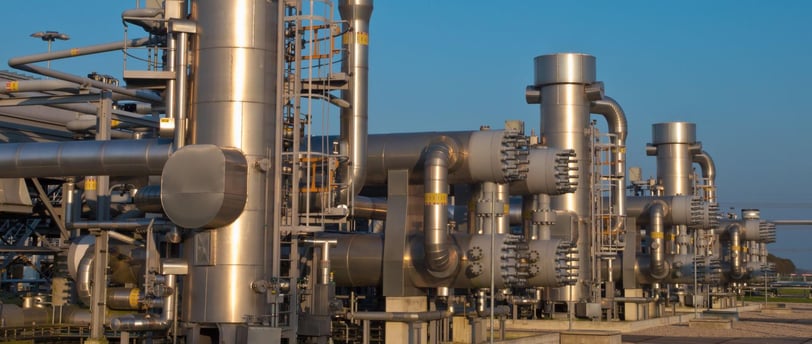Add your promotional text...
Natural Gas Market Heats Up: Key Factors Driving Prices and Future Trends
Synopsis: Natural gas prices surged to ₹340.5, supported by colder-than-expected U.S. weather, increased LNG exports, and supply disruptions. With record consumption levels and projections for continued growth in production and demand, the natural gas market is poised for significant developments in 2025.
COMMODITIES
By Ekta Mani
1/27/20253 min read


A Market Fueled by Weather and Demand
Natural gas prices have experienced an upward momentum, closing at ₹340.5 with a 0.89% increase. This surge was driven by colder-than-normal weather forecasts across the U.S. and the return of the Freeport LNG plant in Texas, which resumed operations after an extended outage. As plunging temperatures pushed demand to record highs, the natural gas market is gaining attention for its potential to sustain elevated prices and increased consumption.
Colder Weather Spurs Demand
Unseasonably cold weather has been a major catalyst for rising natural gas prices. The U.S. recently experienced its coldest temperatures in five years, driving daily gas consumption to all-time highs. This spike in demand has also led to multi-year peaks in spot gas and power prices, reflecting heightened market activity.
Natural gas flows to liquefied natural gas (LNG) export facilities have significantly increased, further supporting prices. The return to service of Freeport LNG’s Texas plant has bolstered supply chain confidence, signaling improved export capacity. This development is particularly crucial as global demand for U.S. LNG remains robust, driven by energy needs in Europe and Asia.
Production Challenges Amid Record Demand
Despite robust demand, natural gas production in the U.S. faced temporary setbacks. In January, production in the Lower 48 states averaged 102.0 billion cubic feet per day (bcfd), down from a record 104.5 bcfd in December 2023. Freeze-offs—caused by extreme cold weather disrupting wells and pipelines—were a key factor behind this decline.
Earlier this week, daily output dipped to a one-year low of 97.5 bcfd, but it has since rebounded to 99.3 bcfd. These fluctuations highlight the vulnerability of production to weather conditions, emphasizing the need for a resilient infrastructure to mitigate future disruptions.
Storage and Inventory Trends
Storage levels remain a critical component of natural gas market dynamics. Last week, U.S. utilities withdrew 233 billion cubic feet (bcf) of natural gas from storage, slightly below the expected 244 bcf. This brought total inventories to 2,896 bcf, a level that is:
1.9% lower year-on-year, but
0.7% above the five-year average.
While storage levels are adequate to meet current demand, continued withdrawals could tighten supplies, especially if extreme weather persists.
Short-Term Outlook: A Record-Breaking Future?
The EIA’s Short-Term Energy Outlook (STEO) provides an optimistic projection for natural gas production and demand. By 2025, the U.S. is expected to achieve record levels, with:
Dry gas production reaching 104.5 bcfd.
LNG exports climbing to 14.1 bcfd, driven by growing global energy needs.
These figures reflect the U.S.'s expanding role as a key player in the global natural gas market. The combination of increased domestic production and robust export demand sets the stage for sustained growth in the sector.
Technical Analysis: Support and Resistance Levels
The natural gas market has seen fresh buying activity, evidenced by a 2.08% rise in open interest to 7,805 contracts. Key technical levels to watch include:
Support: Immediate support is seen at ₹331.2, with additional downside at ₹322.
Resistance: On the upside, resistance is located at ₹346, with a breakout above this level opening the door to testing ₹351.6.
Traders should closely monitor these levels as they could signal the next significant price move, either consolidating recent gains or pushing prices higher.
Factors Shaping Market Sentiment
Several factors are contributing to the current bullish sentiment in the natural gas market:
Colder-than-Expected Weather: Prolonged cold spells are driving unprecedented consumption levels.
LNG Export Growth: The resumption of operations at Freeport LNG and rising global demand are boosting export capacity.
Production Recovery: Despite recent declines, production levels are rebounding, with long-term growth projections remaining strong.
Technical Indicators: Fresh buying interest and strong support levels indicate a stable foundation for potential price increases.
A Market Poised for Growth
The natural gas market is navigating a complex landscape of high demand, supply fluctuations, and global export opportunities. As colder weather drives consumption to record levels and LNG exports expand, prices are likely to remain elevated in the near term.
With technical indicators signaling strong support and resistance zones, traders and investors should prepare for potential volatility in the weeks ahead. Looking further out, the EIA’s projections for record-breaking production and demand by 2025 underscore the long-term growth potential of the natural gas sector.
For stakeholders, staying informed about weather trends, storage levels, and technical patterns will be critical to navigating this dynamic market. Whether through strategic buying or monitoring resistance breakouts, the natural gas market offers significant opportunities for those prepared to act decisively.
